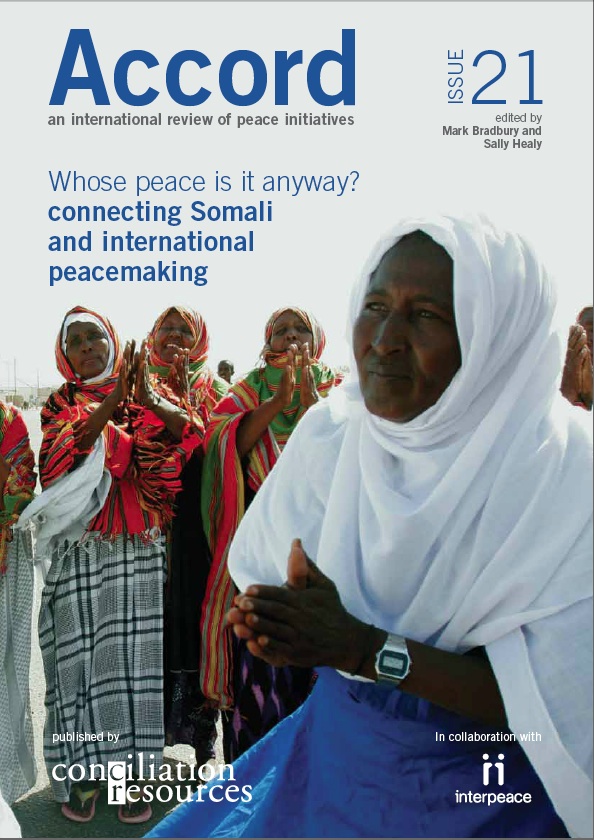The first two international reconciliation meetings aimed at re-establishing a Somali government took place in Djibouti in June and July 1991. Six organisations participated, all representing a clan or sub-clan constituency. But in reality the clan served as an instrument to further ambitions of individuals, most of whom had held influential government positions in the past and were competing for similar ranks in a possible new administration.
An agreement was signed endorsing Ali Mahdi as president. This deal was immediately rejected by General Aideed, who was from a different Hawiye sub-clan to that of Ali Mahdi and was contesting Mahdi’s leadership of the United Somali Congress (USC). As result a bloody civil war in Mogadishu and the south ensued.
The second major national reconciliation meeting was organised by the United Nations (UN) in Addis Ababa in March 1993. This time there were 15 parties to accommodate. Some were new clan organisations, including some minorities that had not been present at Djibouti, but many of the new factions were splinter groups aligned with either Ali Mahdi or Aideed.
The Somali National Movement (SNM) was invited but did not participate. Only three parties had remained intact since the Djibouti meeting. A process to form a new government was agreed but never implemented. By this time the faction leaders were popularly referred to as ‘warlords’.
The UN held another meeting in Nairobi in March 1994. The number of attendees had again increased, but all belonged to one of two alliances, Aideed’s Somali National Alliance (SNA) and Ali Mahdi’s Somali Salvation Alliance (SSA). Divided factions carried the name of which grouping they were allied to, eg the USC/SSA and USC/SNA, the Somali Patriotic Movement (SPM)/SSA or SPM/SNA.
In October 1996 Kenyan President Daniel Arap Moi hosted the three main Mogadishu leaders, Ali Mahdi, Osman Atto and Hussein Aideed (who had succeeded his father as SNA leader after the latter’s death) along with other members of the SSA. Despite agreeing a nine-point peace deal, the initiative failed to resolve anything and the proliferation of parties continued.
The international community was unable to engage fresh leaders or persuade the factions to be represented by unified bodies. New breakaway factions of existing groups were always allowed to attend.
Some twenty-seven signatories were party to the third major reconciliation conference organised in Sodere, Ethiopia, from November 1996 to January 1997, even though Hussein Aideed and four factions allied to him had refused to attend.
A fourth reconciliation meeting in Cairo in late 1997 saw 28 signatories to the ensuing agreement, including both Ali Mahdi and Aideed. But this time faction leaders closer to Ethiopia such as Abdullahi Yussuf withdrew from the talks, which they saw as hostile to the Ethiopian-backed Sodere process and also too close to some members of Al Itihad – an Islamist militant group engaged in armed confrontations with Puntland and Ethiopia.

